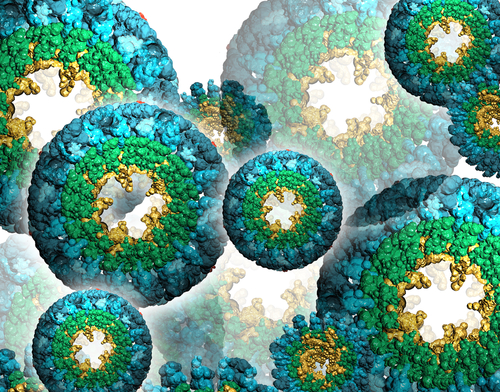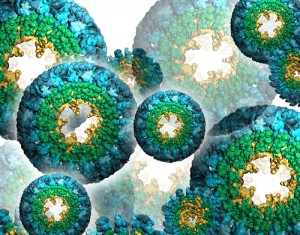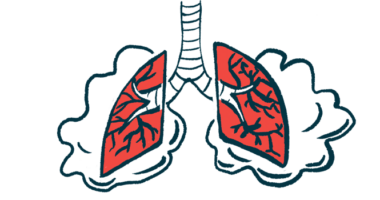Discovery of New Protein Structure Could Benefit Cystic Fibrosis Research

 In a recent study entitled “Subnanometre-resolution electron cryomicroscopy structure of a heterodimeric ABC exporter” published in the online issue of Nature, the authors determined the structure of an ABC transporter protein with a sub nanometer resolution for the first time. The new findings has implications in the continued study of Cystic Fibrosis.
In a recent study entitled “Subnanometre-resolution electron cryomicroscopy structure of a heterodimeric ABC exporter” published in the online issue of Nature, the authors determined the structure of an ABC transporter protein with a sub nanometer resolution for the first time. The new findings has implications in the continued study of Cystic Fibrosis.
Cystic Fibrosis (CF) is a life-threatening disease caused by mutations in the Cftr gene (cystic fibrosis transmembrane conductance regulator gene). The disease is characterized by accumulation of thick mucus, particularly in lungs and gastrointestinal organs, and is associated with recurrent infections that culminate in difficulty in breathing and eventually escalate to life-threatening symptoms, such as pulmonary failure. CFTR is an ABC gene — it belongs to the ABC transporters’ family, but unlike ABC transporters that work as effluxes, CFTR regulates opening and closing of chloride and sodium ions’ channels. Thus, in the absence of CFTR functional protein, thick mucus accumulates, leading CF patients more susceptible to infections.
[adrotate group=”1″]
In this new study, researchers at the Institute for Biochemistry at the Goethe University and colleagues at the University of California in San Francisco were able to determine for the first time the structure of an ABC transporter at a sub nanometer (less than a nanometer, with a nanometer being equal to 10-9 metros) resolution. The finding was achieved with a new single electron camera, together with new imaging techniques and with specific antibody fragments.
Professor Robert Tampé from the Institute for Biochemistry at the Goethe University and one of the study’s corresponding authors noted, “On the one hand, ABC transporters cause diseases such as cystic fibrosis, while, on the other hand, they are responsible for the immune system recognizing infected cells or cancer cells. Over a period of five years, we have successfully implemented a number of innovative, methodological developments. These have enabled us to gain insights that previously were unimaginable. The combination of physical, biotechnological, biochemical and structural biological methods has led to a quantum leap in the elucidation of the structure of macromolecular complexes.”
Because ABC transporters are so pivotal in whether or not disease develops or is repelled by the body, this new insight into the structure of ABC transporter protein may lead to the development of next-generation therapeutics that can offer improved outcomes for slowing the progression of Cystic Fibrosis.







